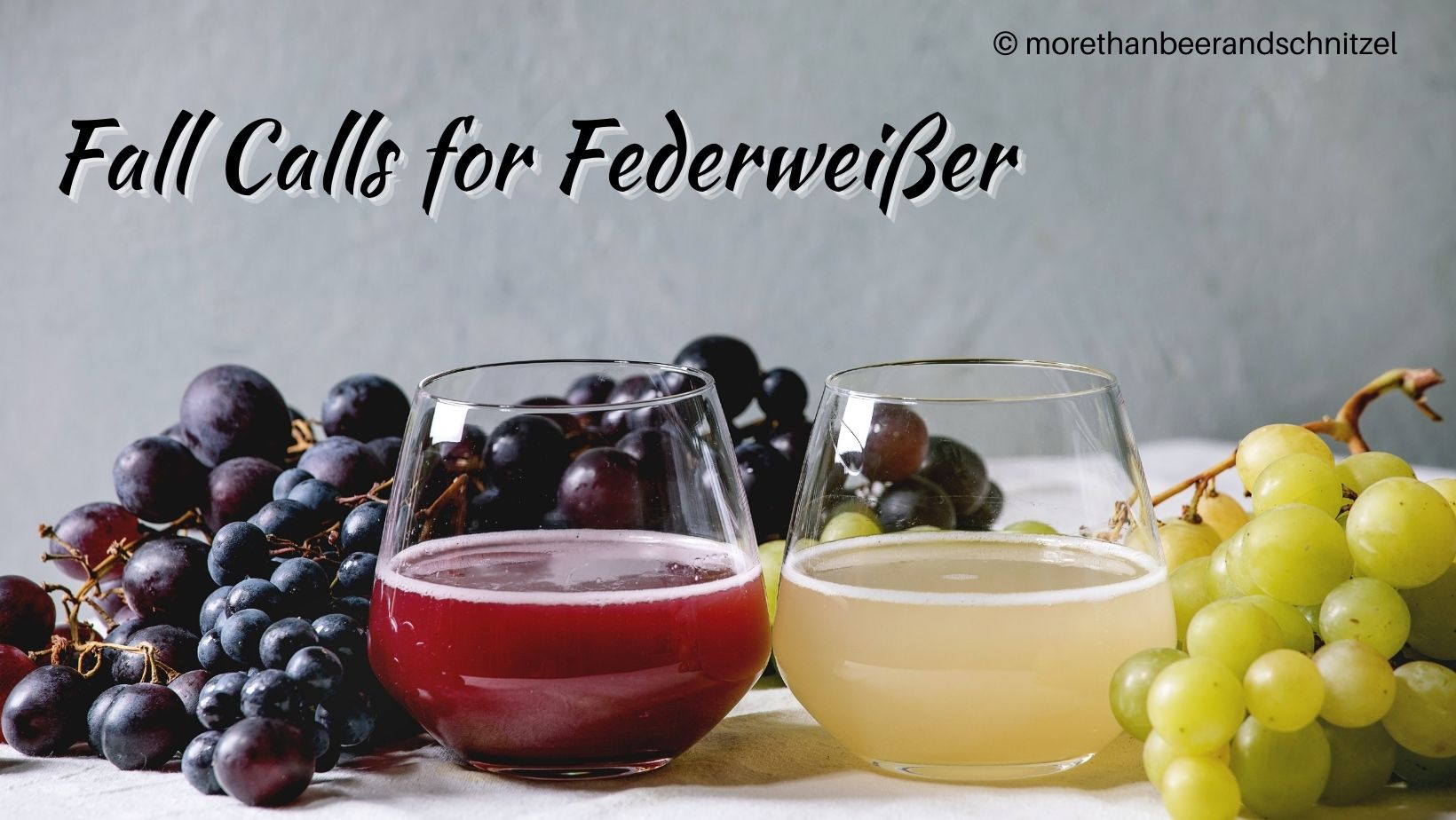Federweißer or federweisse is a young white wine, or – to be more accurate – grape juice that just started fermenting. Its technical name is “teilweise gegorener Traubenmost” or ‘partially fermented grape must’. It’s fruity sweet and slightly sparkling.
Federweißer literally means “feather white”, called so because of its whitish color and the little yeast particles that float in the drink like little feathers. But depending on the region it is also known as Sturm (storm) in Austria, Neuer Wein (new wine) and Bitzler in Palatinate, Rauscher (intoxicator) in Rhine Hesse, Sauser in Switzerland, and Neuer Süßer (new sweet one) in Alsace. If the wine is made from red grapes, it might be called Federroter, Roter Sauser, or Federweißer Rosé.
Many different foods go with this wine but most often you’ll find it being served with Zwiebelkuchen (onion tart or quiche), Flammkuchen (similar to pizza, from the Alsace), or Laugengebäck (lye pastry like a pretzel).

When to buy it, how to drink it
Depending on the beginning of the harvest season, Federweißer is normally available from September until the end of October. However, sometimes the wine can be bought as early as August, and as late as November or December. If the vintner stores the grapes in a cool place the young wine season can be prolonged into the cooler months.
When buying a bottle (or two) of Federweißer, you need to be aware that the bottle is not closed airtight. Because the grape juice is fermenting, the glass might burst if completely sealed. Therefore you have to store the bottle upright. And that’s also the reason why the wine can’t be bought abroad, or very far away from where it was bottled.
After buying your Federweißer you can keep it at room temperature to let it ferment a little longer and grow tarter in taste. Afterwards, place it in the fridge (still upright) to slow fermentation. It also tastes best when served cool.
Don’t keep it too long though, Federweißer should be used within a couple of days of purchasing it. At first, the wine contains around 4% alcohol but throughout the days the alcohol content can rise up to 11%. Because of its sweet taste, it’s easy to drink too much too quickly, so beware!


Fest des Federweißen
The Fest des Federweißen takes place annually in the city of Landau in the Palatinate. The city has one of the largest areas of vineyards. Origin of the festival is believed to be one of the regional “Bitzlerfeste“, Bitzler being the local name for Federweißer. In 1953, Landau hosted the first festival, and it has been growing ever since, with around 100,000 visitors. Normally, stores and shops are closed on Sundays, but not so during the Federweißen-Fest, another draw for many people.
The wine festival runs from Thursday to Sunday in the third week of October. On Thursday, the mayor and the German Wine Queen open the Fest, the new Landau Wine Princess is introduced while the old one makes her farewells. In the evening the new vintage year is christened, an honor Landau took over from the Deutsche Weinlesefest in Neustadt in 1997.
In six Weinkojen, open tents with seating, Federweißer and the red version Roter Rauscher are offered. But of course, you can also drink ‘old’ wine from vineyards in the area.
Because Federweißer has a light taste, it pairs well with savory dishes like Zwiebelkuchen, a cake made with onions and bacon, either with a yeast dough or a shortbread dough. (There are many different recipes to make it at home), Flammkuchen also works well, and in Austria it may be served with a lye pastry or a platter of cold cuts, cheese, and bread.
(If you really like Zwiebelkuchen, you should visit the Zwiebelmarkt in Weimar. It’s held on the second weekend in October.)

Sturm in Austria
If you find yourself in Austria during Federweißer season, make sure you use the Austrian name for it: Sturm. The cloudy appearance of the wine does have a resemblance to storm clouds. When drinking wine with friends, you might be tempted to clink glasses and say “Prost“, but you have to resist. Unless you want to pay the next round of Sturm.
In the time before the Weintaufe (blessing of the young wine) that happens in many areas, and normally takes place on St. Martin’s Day on November 11th, you can neither clink glasses nor say “Prost“. You shouldn’t even use your right hand when drinking it.
So, make sure that you pick up the glass with your left, and say “Mahlzeit” (literally ‘meal time’, basically meaning ‘have a good meal’) or possibly “Krixikraxi“. Once the wine has been christened on November 11th, you can finally grab the handle of your glass and toast your glasses with “Prost“!

Sources and Resources
- Wiki -Federweißer
- Sturm in Österreich
- German Foods
- Wiki – Fest des Federweißen
- Federweißer-Fest
- Federweisser in the US
- Gastro Obscura
- YouTube Playlist


